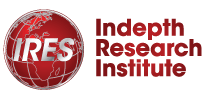Irrigation in Africa is dangerously lagging. Only about 6% of farmland in sub-Saharan Africa is equipped with reliable irrigation. SoLAR Phase II is changing that. Building off SoLAR’s Phase I successes in South Asia, the project is expanding now to East Africa particularly Kenya and Ethiopia. The aim: scale solar-powered irrigation pumps and productive use of renewable energy (PURE) like cold storage, dryers, milling, and agro-processing.
Contents
What is SoLAR Phase II?
SoLAR stands for Solar Irrigation for Agricultural Resilience. Phase I ran from 2019-2024 in South Asia.
Phase II expands to Kenya and Ethiopia, introducing more holistic energy / agriculture solutions not just irrigation but also agro-processing powered by solar.
Why Solar-Powered Irrigation Matters
Higher Productivity – Solar pumps offer reliable, cost-effective water supply, especially during dry spells. Rainfall only is no longer enough.
Reduced Input Costs – Replacing diesel and grid-electric pumps reduces fuel costs and carbon emissions.
Food Security & Resilience – More land can be farmed year-round; crops survive droughts or erratic weather.


Case Stories
SunCulture in Kenya – Smallholders using solar-powered irrigation have reported up to 80% savings compared to diesel pumps. Income tripled for some, with diversification into fruits, vegetables, beekeeping, etc.
InfraCo Africa / Bonergie in Senegal – In their Phase II rollout, 2,000 new Solar Powered Irrigation Systems (SPIS) and 500 drip systems are being installed. These aim to provide more efficient irrigation and reduce water over-use.
Smallholder farms across SSA – A study by IIASA under the RE4AFAGRI project found that standalone solar PV irrigation could meet over one-third of the water needs for crops in small-scale farms, significantly closing yield gaps.
What Scaling Under SoLAR II Looks Like
To scale successfully in Kenya & Ethiopia, SoLAR Phase II focuses on:
- Policy & regulatory alignment — enabling frameworks for solar irrigation, land and water rights, and renewable energy use.
- Technical capacity building — training farmers, technicians, and extension officers in installation, maintenance, and efficient water use.
- Financing models — subsidies, pay-as-you-grow, or blended finance to help smallholders access solar systems.
- Inclusive design — ensuring women farmers, smallholders, and marginalized groups benefit.
Scale up in Agriculture technology today.
Challenges to Overcome
High upfront costs — Solar systems cost more initially; without good financing, many can’t afford them.
Water governance & sustainability — Risk of over-exploitation of groundwater if too many pumps are installed without regulation.
Technical maintenance & quality — Solar pumps, panels etc need upkeep, spare parts, reliable supply chains.
Farmer awareness — Many farmers don’t know about solar options, or distrust them, or simply lack information.
Did You Know?
- Kenya has potential to irrigate 3.3 million acres, yet only about 710,000 acres are currently under irrigation. SoLAR II aims to help close that gap.
- Farmers with solar irrigation systems in Uganda saw production increases of around 193% annually over traditional methods.
- SunCulture has sold over 47,000 solar irrigation units across Kenya, Uganda and Ivory Coast, with plans for further expansion.
Read more on: The Role of ESG in Transforming Agricultural Value Chains
FAQ
Q1: What is the difference between solar irrigation and conventional irrigation?
Solar irrigation uses solar energy to pump water, reducing fuel or electricity costs and carbon emissions.
Q2: How affordable are solar irrigation systems for smallholder farmers?
They are expensive initially, but many programs (SoLAR II, SunCulture, Bonergie) use financing, subsidies, or pay-as-you-grow models to make them accessible.
Q3: Will installing many solar pumps harm water resources?
It can, if water use is unregulated. SoLAR II emphasizes sustainable water governance to avoid overuse.
Q4: What productivity gains do farmers see with solar irrigation?
In many cases, productivity increases of 50–100% for irrigated crops vs rain-fed or diesel/rain-fed. Examples from Senegal, Kenya show strong gains.
Conclusion
SoLAR Phase II offers a strong blueprint for how solar-powered irrigation can transform Africa’s agriculture. By scaling systems with smart financing, inclusive policy, and capacity building, we can boost farm productivity, reduce reliance on fossil fuels, and build resilience to climate change.
For agribusinesses, policy makers, and training providers like IRES, the opportunity is clear: support this scale up, fill capacity gaps, and ensure benefits are broad and sustainable. The sun can power Africa’s farming future.
I am a passionate digital marketing and communication professional with a strong background in content creation, social media management, graphic design, and campaign strategy. Over the years, I’ve gained hands-on experience developing digital content, managing brand presence across platforms, and driving engagement through storytelling and data-informed decisions. My work is guided by creativity, purpose, and a deep commitment to helping brands connect meaningfully with their audiences. You can reach me at [email protected] for inquiries.







Comment here